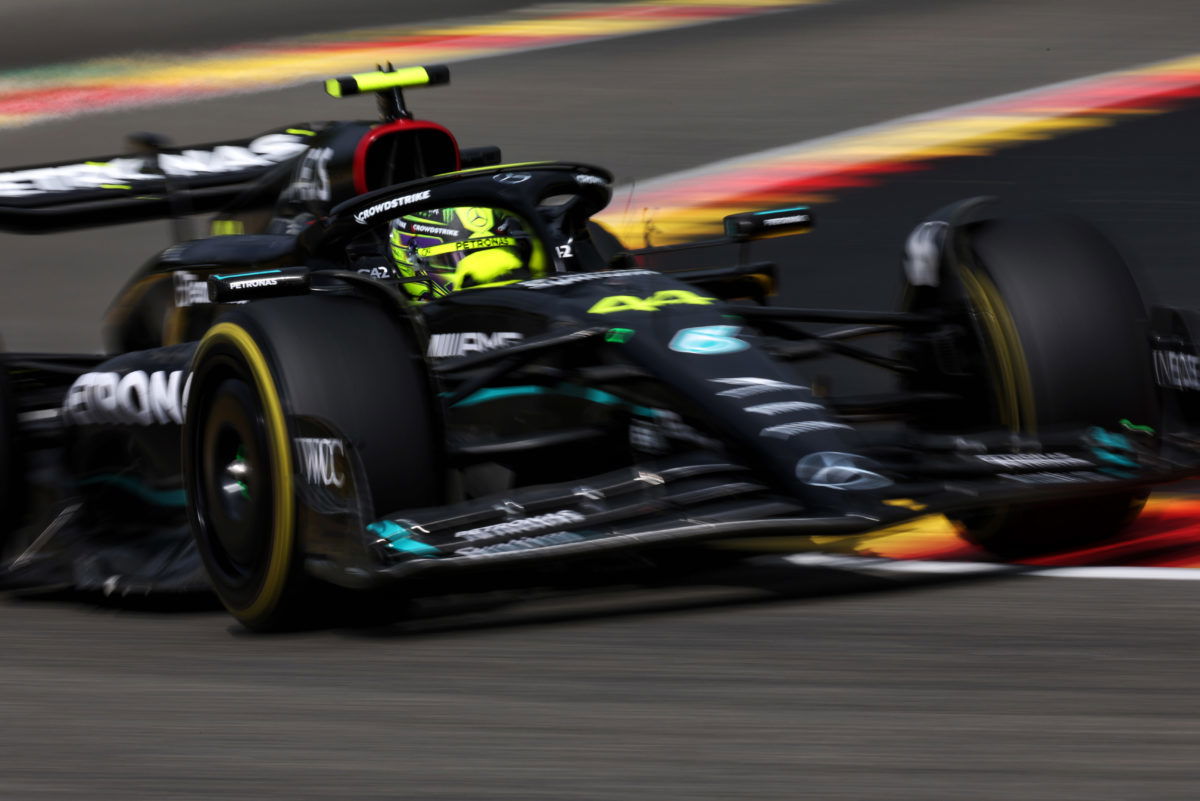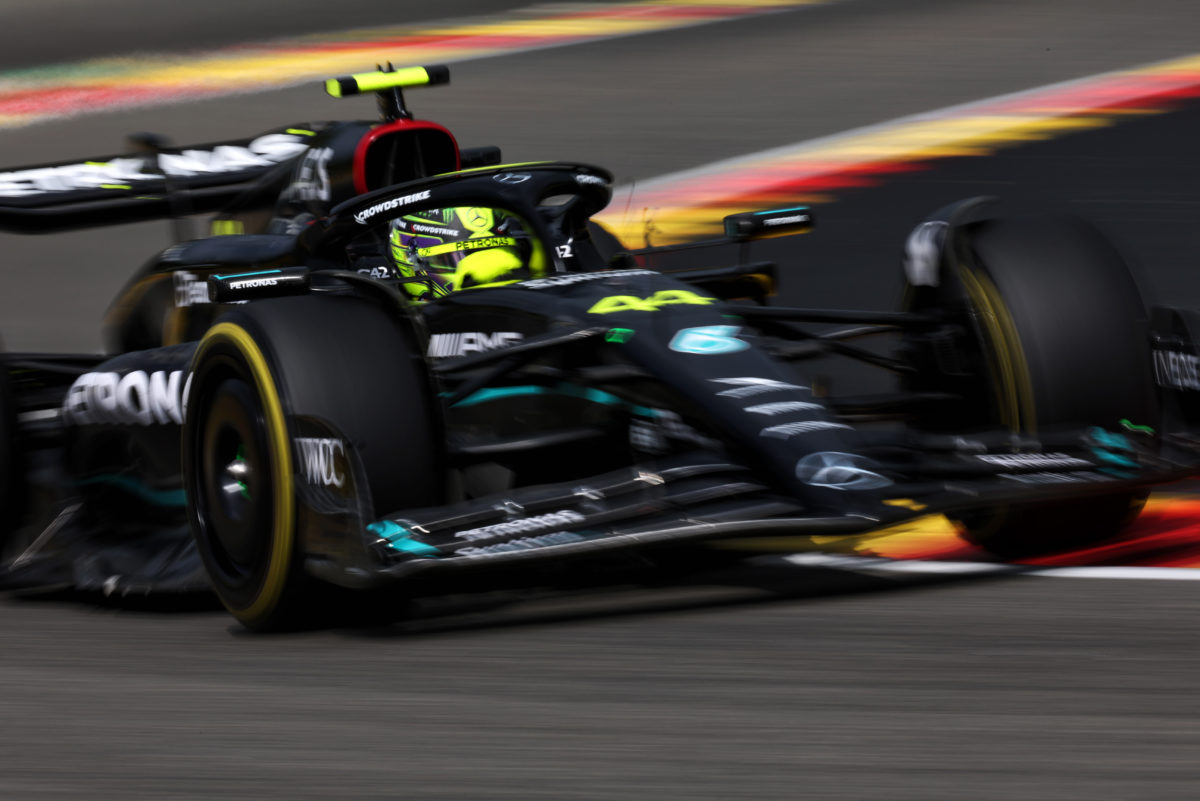

Mercedes feel a combination of factors resulted in its W14s again being subjected to bouncing across the Belgian Grand Prix weekend.
In what was a throwback to last year when the introduction of new aerodynamic regulations, and a return to ground-effect cars, led to extreme levels of porpoising and bouncing, Mercedes suffered more than most at the Spa-Francorchamps circuit.
The sprint weekend format did not help matters as there was only one practice session, heavily impacted by the weather, leading to all teams being unable to dial out any gremlins early on.
Such a scenario particularly impacted Mercedes.
Chief technical officer Mike Elliott said: “We definitely had an amount of bouncing over the weekend, both drivers were telling us that, and we could see it in the data.
“We could also see an amount of bouncing on the other cars, and I think some of it is the nature of the circuit at Spa. In fact, we had huge amounts of bouncing last year, as did most teams.
“It definitely affects the performance of the cars because it affects the drivers’ ability to extract the maximum grip from the car, it affects their balance, and it affects their ability to get their braking points right, so that is something we will be working on for the future.
“The question we need to ask ourselves is, how much of it is just the circuit we were at in Spa, and how much is to be found in set-up because, obviously, it was a wet race weekend, where we had no dry running up until the point we were actually racing.
“We will also take a really good look at the upgrade kit and make sure we’ve not introduced bouncing with that but at the moment our belief is it is probably a result of set-up or the circuit itself.”
The capricious nature of the weather over the track, particularly across Friday and Saturday, also negatively affected the long-run ability of the car, an area in which Mercedes has often excelled this season.
In contrast, the W14 was more performant over one lap, enabling seven-time champion Lewis Hamilton, in particular, to qualify fourth on Friday evening, and start third due to a gearbox penalty for Red Bull’s Max Verstappen.
During the main race, however, Hamilton was unable to make any inroads, finishing fourth behind Verstappen, Red Bull team-mate Sergio Perez, and Ferrari’s Charles Leclerc.
Explaining the “unusual” discrepancy, Elliott said: “Generally, we’ve good tyre degradation, and generally, we do much better in the race than we do in qualifying.
“When you look at the weekend as a whole, the mixed conditions and the drying tracks meant that in qualifying the pace was changing lap to lap as the track dried up, and the tyres you were running on were changing from session to session.
“That was probably more about what the driver can get out of the car than getting to that perfect point at the end of qualifying.
“I think both of our drivers did an excellent job to safely navigate through the weekend and put in good laps when they needed to put them in.
“In terms of the race pace, that is all about degradation, and to get the degradation you want, you’ve got to have the balance in exactly the place you want it. For us, we weren’t there.
“That is just a result of not having dry laps in practice, not having enough opportunity to get the set-up of the car just where you want it, and relatively we ended up with a car that wasn’t quite as well balanced as maybe some of our competitors were.
“As a result, we had more tyre degradation and, therefore, weren’t really able to extract the race pace that we would have liked to have seen.”





















Discussion about this post